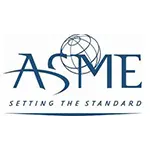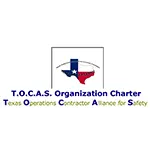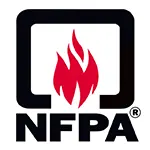Let us help you make sense of PSM / RMP!
My friend Brian Chapin will be offering an open-enrollment PSM/RMP class in Burleson, Texas, July 8th to 11th, 2025. Brian is an absolute pro in NH3 Refrigeration Process Safety. Anyone who attends will also get a FREE membership to SAFTENG. You can get more information on the class with this link.
CLICK HERE to Renew your Membership
CLICK HERE for a NEW Membership
CLICK HERE to see eligibility requirements for FREE Membership
If you have any questions, please contact m
SAFTENG has:
- Over 18,000 categorized unsafe acts/conditions and accident/injury photos
- Over 1,500 ppt's & doc's in the SAFTENG Library
- Over 4,000 Technical Articles on Process Safety, Emergency Response & OSH topics
- Over 450 videos (those not allowed on YouTube Channel)
Many THANKS to my NEW Members and those who CONTINUE to support SAFTENG:









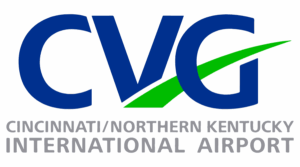

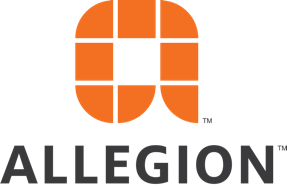


March 28, 2011
I have been asked to explain the difference between actions an operator may take during a process leak and the actions that the same operator may take as an “emergency responder” to the leak.
…
HomeRead More »
Read More
March 28, 2011
Many THANKS to my NEW & RENEWING Corporate Partners in Safety! since 3/2011 since 3/2011 since 2007 since 2009 since 2/11 2011 Fatality Tracker Electrical 6 (2010 = 90) (2009 = 100) Forklift/Manlift Mobile Equipment 27 (2010 = 110) (2009=88) Mining 48 (2010 = 480) (2009 = 586) Explosions 48 (2010 = 246) (2009 = 302) Cranes 6 (2010 = 50) (2009 = 82) Falls 24 (2010 = 139) (2009 = 172) (2008...
Read More
March 27, 2011
Still today (2011) we come across facilities working so hard to be the best they can be in PSM/RMP and in 99% of their process they are exceeding expectations. They are doing EVERYTHING WELL and running a VERY TIGHT ship…except for the loading and unloading of their Highly Hazardous Chemical (HHC).
…
HomeRead More »
Read More
March 27, 2011
Nonconductive plastics and other nonconductive materials should be avoided in areas where flammable vapors, gases or powders may be present since static charges can accumulate on nonconductors. However, it is not always possible to completely eliminate nonconductors, so the following lists some of the ways to reduce the static hazard associated with these materials: When it is necessary to use plastic...
Read More
March 27, 2011
Cleaning small parts and portable equipment with solvents, either using an automatic device or manual cleaning, is a potentially extremely hazardous task relative to static generation and spark ignition of solvent vapors. Significant static electricity charging can occur during cleaning by contact and separation resulting from the following activities: Solvent spraying, which can involve...
Read More
March 26, 2011
One option for mitigating the static hazards associated with low conductivity liquids is to raise the conductivity of the liquid. This can be accomplished by either blending the low conductivity liquid with a conductive liquid (e.g., alcohol, ketone) or by adding a static dissipating additive into the low conductivity liquid. When blending a low conductivity liquid with a conductive one, the...
Read More
March 26, 2011
Toluene is a widely used low conductivity flammable liquid. Toluene’s vapor pressure is such that one is assured of a flammable vapor/air mixture at the ambient temperatures found in most facilities. The Lower Explosive Limit (LEL) of toluene is 1% and is reached at a temperature of 40°F (4°C). The Upper Explosive Limit (UEL) is 7% and is reached at a temperature of approximately 98°F...
Read More
March 26, 2011
Improper handling of low conductivity liquids is a source of static energy that causes flammable vapor ignition. Low conductivity liquids will accumulate a static charge from liquid shear charging at the pipe or vessel wall. The charge in a low conductivity liquid can NOT be dissipated by grounding. Low conductivity liquids are typically derived from distilling or fractionating hydrocarbon feedstocks....
Read More
March 26, 2011
This notice is to inform you of an increase in the number of hazardous materials (HM) incidents involvingAnhydrous Ammonia (NH3) and Liquefied Petroleum Gas (LPG)
…
HomeRead More »
Read More
March 26, 2011
In my line of work, I deal with a lot of fire departments. It almost never fails that I am told at least once while on scene that “all that OSHA stuff don’t apply to us”. In many cases this is a true statement; however, EPA has adopted OSHA’s Hazwoper standard (1910.120) and will enforce it when OSHA has no juridiction. But I also want to point out that in...
Read More
March 26, 2011
A fundamental requirement of using respirators is NO facial hair that could interfere with the respirator’s operation or the respirator’s fit. OSHA states: 1910.134(g)(1)(i) The employer shall not permit respirators with tight-fitting facepieces to be worn by employees who have: 1910.134(g)(1)(i)(A) Facial hair that comes between the sealing surface of the facepiece and the face or that...
Read More
March 26, 2011
Does your workplace use the handi-wipes for cleaning respirators? Do you feel this is compliant? After all it is a very common practice and how could it be so widely used if it is not compliant?????
…
HomeRead More »
Read More










